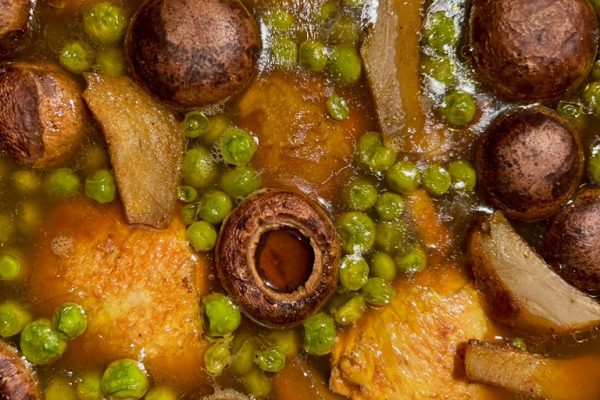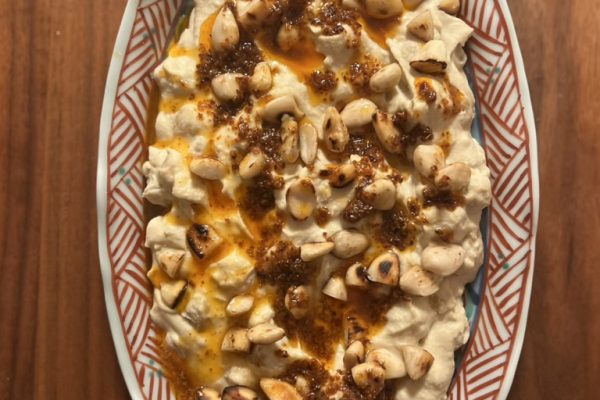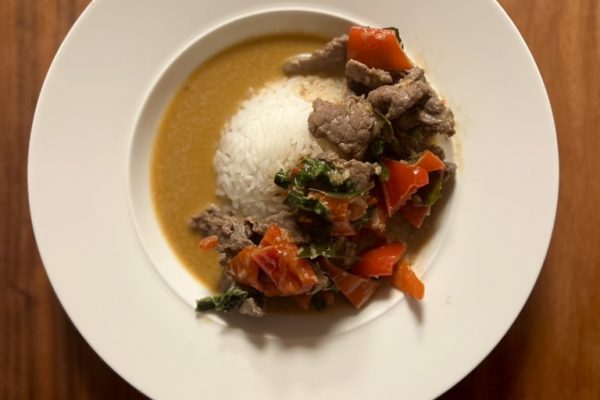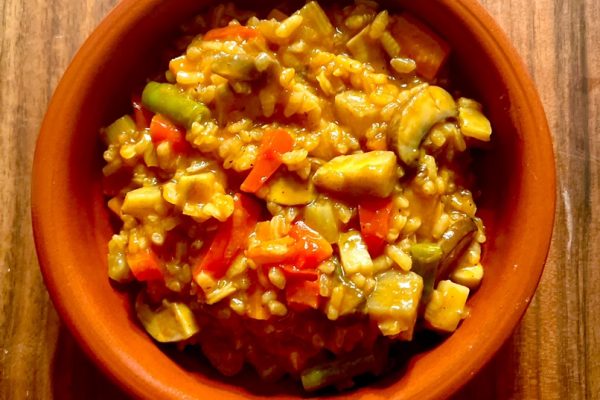COVID in the house again, so food with healing powers is needed. Last time, chicken soup was the remedy of choice, this time we are countering the virus with Indian cuisine.
This ancient Indian dish is called “खिचड़ी” in Hindi and is spelt “Khichdi” or “Khichri” onomatopoeically in our alphabet.
It is a light and at the same time nutritious, very healthy everyday dish that can be prepared with few ingredients and little effort, and is also suitable for breakfast. Apart from that, it is prepared in India – then less spicy – for babies or in case of illness, especially digestive problems.
The British meal kedgeree, often prepared with fish and also eggs, is a variation of this dish that originated during the colonial period.
As is so often the case in Indian cuisine, there are countless variations, but they all have a few things in common. Feel free to experiment on this basis and create your own personal khichdi.
The basic ingredients are always lentils and rice. Very suitable are peeled and halved mung beans, which are often available in shops as “Moong Dal” or “Mung Dal”. But other types of yellow pulses that can be cooked quickly until soft can also be used. The rice should be a basmati, i.e. an aromatic long-grain rice as eaten in India.

A ratio of lentils to rice of 1:1 is often recommended. We like to use more lentils and a ratio of 1.5:1. For four substantial servings today, that is 300 g Moong Dal and 200 g Basmati.
Pulses roughly double their weight when cooked. Rice can even triple its weight. With the quantities given here, you can cook a good kilo of khichdi.
Put the lentils and rice in a fine sieve and wash them under running water. This removes the fine and very starchy dust from the products so that your dish does not turn into a sticky mush later.
In a large pot, we add two teaspoons of turmeric powder (also called “haldi”) and one teaspoon of salt. Pulses should usually be cooked without adding salt because otherwise they take much longer to cook soft, but here the salt is recommended to make the rice tastier. We also recommend adding a pinch of asafoetida (“hing”), as this spice makes pulses more digestible.

Now we add 1.2 l of water, stir once and bring the whole thing to the boil. As soon as this has happened, cover the pot and immediately turn the temperature down to a low flame, which for us is level 2 of 10. As with cooking rice, it should now be steamed rather than boiled, otherwise the water would also quickly overflow despite the lid.

Depending on the lentils, it takes a good 40 minutes or even longer until they are soft. The rice will not be harmed by the long cooking, don’t worry. After 30 minutes, check whether you need to add more water (if so, add boiling water so that the cooking process is not interrupted). After that, just keep tasting to see if the lentils are soft. As soon as they are soft, turn off the heat.
In the meantime, we take care of the other aromas.
Khichdi is usually less spiced than a pure Dal. We use a larger onion, 2 cm of ginger and two cloves of garlic. We dice everything finely, keeping the onion separate as it needs to cook longer.

For spices, we use cumin seeds (obligatory) and mustard seeds (optional), one and a half teaspoons each.
We also have fenugreek seeds on hand and grind up another spoonful. You will not read this in many recipes, but it adds a very subtle flavour complexity. You can also buy dried fenugreek leaves, which you would grind between your palms and add to the dish just before finishing. We explain this in more detail when we cook a Dal.
We also use Kashmiri Chili for the spiciness, which everyone must decide according to their own taste. For us, it’s a good two teaspoons.
Lastly, we also use two teaspoons of coriander powder.

In a pan we now prepare the seasoning mixture, which is called “tadka” in Indian cuisine. We will also write more about this, because this procedure is a typical feature of the Indian cooking technique.
We heat a tablespoon of ghee or clarified butter in a pan. If you want to eat vegan, use a vegetable oil, mustard oil would be particularly suitable in terms of taste. In the hot pan (medium-high heat, about 65 – 70 % of the power) we first add the non-ground spices, i.e. cumin seeds and mustard seeds.

Briefly fry the seeds until they begin to smell fragrant. Then add the onions and sauté for a good five minutes until they begin to brown.

Now add the ginger and garlic, but do not let either brown. If you use ground fenugreek seeds, roast them briefly as well now.

When the onions are browned, add the Kashmiri Chili and coriander powder and stir-fry for half a minute – no longer, otherwise the spices would become bitter.

Add 200 g of chopped tomatoes. It’s winter, so they come out of the can.
Khichdi can also be prepared without tomatoes, with more or less of them. As we said, there are endless variations and all are legitimate. We use relatively few tomatoes and love the sweetness and fruitiness they contribute.
With the tomatoes, the tadka is now cooked gently until the liquid from the tomatoes has largely evaporated.
The result is a typical picture of Indian cuisine:

Now what belongs together is being brought together:

Mix everything well and then heat gently for 5-10 minutes so that all the flavours combine. You can now also add water to achieve the right consistency for you. Then season to taste with salt.
We then add two teaspoons of Garam Masala and let the khichdi simmer for another few minutes so that the flavours fully develop.

All done.

Enjoy.
And may the taste be with you.
Ingredients (for 4 people):
300 g Moong Dal
200 g basmati
200 g tomatoes (can)
1 onion
2 cm ginger
2 cloves of garlic
A little ghee or vegetable oil
2 teaspoons turmeric
1 pinch of asafoetida (recommended)
1 ½ teaspoons of cumin seeds
1 ½ teaspoons mustard seeds (optional)
1 teaspoon grinded fenugreek seeds (optional)
2 teaspoons coriander powder
Kashmiri Chili to taste
2 teaspoons Garam Masala





2 thoughts on “Khichdi”